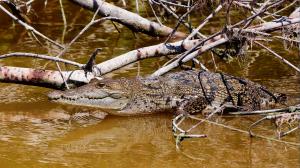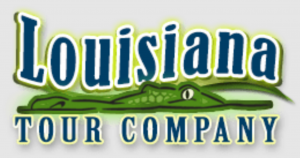Alligator Behavior: What Guests May Observe on a Swamp Tour
Alligators are not simply swamp residents—they’re essential to the health of the environment”
MARRERO, LA, UNITED STATES, October 22, 2025 /EINPresswire.com/ -- The swamps of South Louisiana remain among the most fascinating and misunderstood ecosystems in the United States. While cypress trees and Spanish moss create a hauntingly beautiful backdrop, it is often the alligator that captures the most attention. Visitors on guided swamp tours are given a rare opportunity to observe these reptiles in their natural habitat—an experience that blends education, ecology, and a glimpse into the rhythms of life in the wetlands.— Milton Walker Jr.
According to Milton Walker Jr., owner of Louisiana Tour Company in Marrero, understanding alligator behavior provides insight into the broader ecosystem of the region.
“Alligators are not simply swamp residents—they’re essential to the health of the environment,” Walker said. “Their habits tell a lot about the balance of life here.”
A Symbol of Louisiana’s Wetlands
The American alligator (Alligator mississippiensis) has long been an icon of Southern wetlands. Once endangered due to overhunting and habitat loss, the species made a remarkable recovery through conservation and sustainable management efforts. Today, Louisiana’s swamps and bayous are home to an abundant and stable alligator population.
Swamp tours in the New Orleans area provide a unique window into how these animals live and interact with their environment. Observing their daily routines—basking, swimming, nesting, and occasionally hunting—helps visitors understand their importance within the complex web of wetland life.
Daily Routines and Behavior
Alligators are cold-blooded reptiles, meaning their body temperature depends on external conditions. This explains why they are often seen basking in the sun along muddy banks or floating near the surface of warm, shallow water. The heat from the sun regulates metabolism, digestion, and overall energy levels.
During the warmer months, activity increases. Alligators can often be spotted gliding silently through the water, using only their eyes and nostrils above the surface. This posture allows for stealth and awareness while conserving energy. In cooler seasons, their activity slows dramatically. They become less visible, often retreating to dens or burrows dug into the mud to stay insulated from the cold.
Nighttime is typically when alligators hunt. Their vision, adapted for low light, allows them to locate prey such as fish, small mammals, and birds. The diet varies with size—smaller alligators eat insects and crustaceans, while adults feed on larger prey that wanders too close to the water’s edge.
Social Structure and Territory
Contrary to popular belief, alligators are not constantly aggressive. They are territorial, but much of that behavior involves establishing dominance through posture and sound rather than physical conflict. Males, in particular, use deep, resonant bellows to announce presence and ward off rivals.
During breeding season—typically late spring—males and females engage in complex courtship rituals. These may include head-slapping, vocal calls, and gentle nudges, signaling readiness to mate. Nests are built in dense vegetation, composed of mud, sticks, and leaves, and are guarded by the female until the eggs hatch.
Hatchlings are particularly vulnerable and often remain near the mother for protection during their first year of life. Despite this care, survival rates are low due to predation from birds, raccoons, and even other alligators. This natural cycle maintains population balance within the wetlands.
Communication and Sounds
Alligators are surprisingly vocal for reptiles. The deep rumble of an adult male, often described as a “bellow,” can be heard across the swamp during mating season. Juveniles produce high-pitched chirps to signal distress or attract attention from nearby adults.
Body language also plays a role in communication. Raised snouts, inflated bodies, and open mouths can indicate defensive or dominant behavior. Observing these cues on a swamp tour helps guests understand the social interactions taking place among these ancient creatures.
Adaptations for Survival
The alligator’s physiology is a study in evolutionary efficiency. With powerful tails that provide thrust, strong jaws capable of crushing turtle shells, and armored skin resistant to injury, the species has remained virtually unchanged for millions of years.
Nictitating membranes—thin, transparent eyelids—allow alligators to see clearly underwater while protecting their eyes. Their nostrils and throats can close independently, enabling them to submerge completely without water entering the lungs. Even their coloring serves a purpose: dark scales absorb sunlight for warmth, while lighter undersides blend into the reflective surface of the water.
Seasonal Behavior and Nesting
Seasonal changes in Louisiana’s wetlands heavily influence alligator behavior. Spring brings increased movement, feeding, and mating. Summer sees the peak of nesting activity. Females lay between 30 and 50 eggs, carefully covering the nest with vegetation to incubate them through the natural heat of decomposition.
As temperatures drop in fall and winter, activity declines. Alligators enter a period of dormancy known as brumation. They remain in burrows, occasionally poking their snouts above the surface to breathe through small holes in the ice or water. This adaptation allows them to survive cold snaps that would otherwise prove fatal to many reptiles.
Observation Etiquette on Swamp Tours
Swamp tours provide an opportunity to view alligators safely while minimizing disruption to their natural behavior. Experienced captains understand how to approach these animals without provoking stress or aggression. Distance, respect, and observation are key principles.
Alligators often approach boats out of curiosity rather than threat. Remaining calm and quiet allows for natural interactions and better viewing opportunities. Feeding wildlife, however, is strictly prohibited. Human food alters natural behavior and can create dangerous situations for both animals and people.
The Role of the Alligator in Wetland Ecology
Alligators are often described as “ecosystem engineers.” Their digging habits create small water holes known as “gator holes,” which provide refuge for fish, birds, and turtles during dry periods. These microhabitats sustain a wide range of species, especially during seasonal droughts.
Their presence also keeps certain populations in check, preventing overgrowth of species that could destabilize the food chain. In this way, the alligator serves as a keystone species, maintaining the delicate balance of Louisiana’s wetland ecosystems.
A Living Connection to the Past
Observing an alligator up close is a reminder of nature’s endurance. These reptiles have existed for over 200 million years—surviving climate shifts, predators, and even the rise and fall of dinosaurs. Watching one bask in the Louisiana sun offers a direct link to that ancient world.
Milton Walker Jr. of Louisiana Tour Company notes that the experience of seeing alligators in their native environment helps visitors connect with the region’s culture and ecology. “Every movement they make has purpose,” he said. “They are part of what defines the spirit of the swamp.”
About Louisiana Tour Company
Louisiana Tour Company, based in New Orleans, provides guided swamp, plantation, and city tours across Southeast Louisiana. With a focus on education, conservation, and authentic regional experiences, the company offers insight into the natural and cultural heritage of the bayou region.
Morgan Thomas
Rhino Digital, LLC
+1 504-875-5036
email us here
Visit us on social media:
Facebook
Legal Disclaimer:
EIN Presswire provides this news content "as is" without warranty of any kind. We do not accept any responsibility or liability for the accuracy, content, images, videos, licenses, completeness, legality, or reliability of the information contained in this article. If you have any complaints or copyright issues related to this article, kindly contact the author above.


